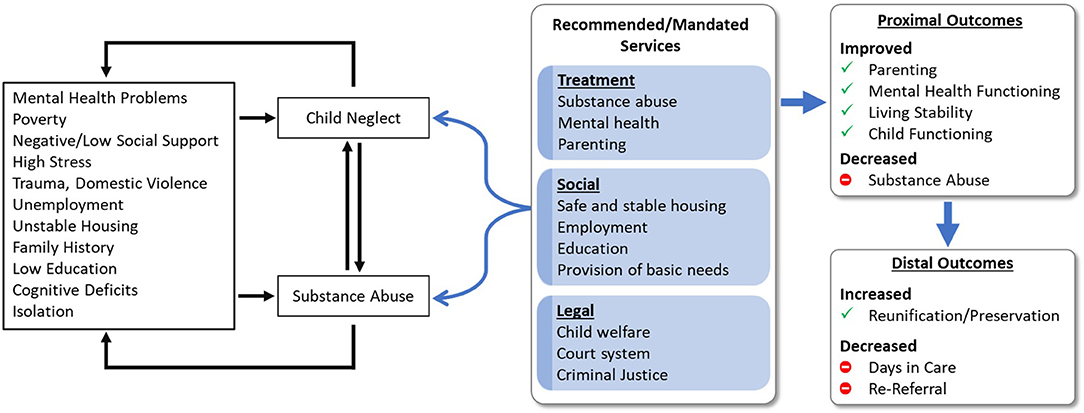Innovative Treatment for Alcohol Use Disorder and Pain Sensitivity: A Sustainable Approach Aligned with SDGs
Recent research from the Scripps Research Institute has identified a promising new use for apremilast, a drug commonly prescribed for inflammatory skin conditions such as psoriasis. This discovery has significant implications for addressing alcohol use disorder (AUD) and associated pain sensitivity, contributing to the achievement of several Sustainable Development Goals (SDGs), particularly SDG 3: Good Health and Well-being.
Apremilast: Dual Action on Alcohol Addiction and Pain
Apremilast functions by inhibiting the enzyme phosphodiesterase 4 (PDE4), which is involved in inflammatory responses. New findings suggest PDE4 also plays a critical role in brain mechanisms related to pain and addiction.
- In animal studies, apremilast reduced alcohol consumption in rats genetically predisposed to drinking.
- The drug alleviated mechanical allodynia, a painful condition triggered by light touch, commonly experienced during alcohol withdrawal.
This dual effect addresses both the physical and psychological challenges faced by individuals with AUD, supporting SDG 3 targets to reduce substance abuse and improve mental health.
Addressing Global Health Challenges: Alcohol Use Disorder and Pain Management
AUD affects over 400 million people worldwide, posing a significant public health challenge. Withdrawal symptoms, especially pain, often lead to relapse, complicating recovery efforts. Current treatments rarely target pain relief, highlighting a gap in comprehensive care.
- Apremilast’s ability to reduce both alcohol intake and withdrawal-related pain represents a holistic treatment approach.
- This innovation aligns with SDG 3.5, which aims to strengthen the prevention and treatment of substance abuse.
Sex-Based Differences in Drug Response
The study revealed important sex-based differences in response to apremilast:
- Most female and some male rats showed reduced pain and alcohol consumption.
- Some male rats did not experience pain relief, indicating biological sex influences treatment efficacy.
These findings emphasize the necessity of personalized medicine and inclusive research designs, supporting SDG 5: Gender Equality, by acknowledging sex differences in health interventions.
Neuroscientific Insights: Apremilast’s Impact on Brain Function
Investigations into the central amygdala, a brain region linked to stress and addiction, demonstrated that apremilast modulates GABAergic signaling, which is crucial for calming brain activity and reducing anxiety and pain.
- In regular rats, apremilast enhanced GABA activity, potentially lowering stress and pain.
- In alcohol-preferring rats, this effect was diminished, suggesting the need for tailored treatments based on individual brain adaptations.
This research contributes to SDG 3.4 by advancing understanding and treatment of mental health disorders.
Future Directions: Expanding Treatment Potential
Researchers aim to explore apremilast’s efficacy in addressing anxiety during alcohol withdrawal, a major relapse factor. By potentially alleviating both physical pain and emotional distress, apremilast could offer a comprehensive solution to AUD.
- Clinical trials in humans are necessary to validate these findings.
- Successful translation could accelerate the availability of effective treatments, leveraging apremilast’s existing FDA approval.
This progress supports SDG 3.8, which promotes access to quality essential medicines and health services.
Conclusion: Advancing Sustainable Health Solutions
The discovery of apremilast’s dual benefits for alcohol addiction and pain management represents a significant step toward integrated healthcare solutions. By addressing complex health challenges through innovative pharmacological approaches, this research aligns with multiple SDGs, including:
- SDG 3: Ensuring healthy lives and promoting well-being for all ages.
- SDG 5: Achieving gender equality through inclusive research.
- SDG 9: Building resilient infrastructure and fostering innovation in medical research.
These advancements offer hope for improved treatment strategies that can reduce the global burden of alcohol use disorder and associated conditions, contributing to healthier, more sustainable communities worldwide.
For further details, the full research findings are published in JCI Insight.
1. Sustainable Development Goals (SDGs) Addressed or Connected
- SDG 3: Good Health and Well-being
- The article focuses on treating alcohol use disorder (AUD) and associated pain and anxiety, which directly relates to ensuring healthy lives and promoting well-being for all ages.
- SDG 10: Reduced Inequalities
- The research highlights the importance of considering biological sex differences in treatment responses, which aligns with reducing inequalities in health outcomes.
- SDG 9: Industry, Innovation and Infrastructure
- The development and repurposing of the FDA-approved drug apremilast for new therapeutic uses reflects innovation in medical research and infrastructure.
2. Specific Targets Under Those SDGs Identified
- SDG 3: Good Health and Well-being
- Target 3.5: Strengthen the prevention and treatment of substance abuse, including narcotic drug abuse and harmful use of alcohol.
- Target 3.4: Reduce by one third premature mortality from non-communicable diseases through prevention and treatment and promote mental health and well-being.
- SDG 10: Reduced Inequalities
- Target 10.2: Empower and promote the social, economic and political inclusion of all, irrespective of age, sex, disability, race, ethnicity, origin, religion or economic or other status.
- SDG 9: Industry, Innovation and Infrastructure
- Target 9.5: Enhance scientific research, upgrade the technological capabilities of industrial sectors, including encouraging innovation and research in health technologies.
3. Indicators Mentioned or Implied to Measure Progress
- Indicators for SDG 3 Targets:
- Prevalence of alcohol use disorder (AUD) and reduction in alcohol consumption levels.
- Reduction in relapse rates among individuals with AUD.
- Reduction in withdrawal symptoms such as mechanical allodynia (pain sensitivity) and anxiety.
- Clinical trial outcomes measuring effectiveness of apremilast in treating AUD and associated symptoms.
- Indicators for SDG 10 Target:
- Data disaggregated by sex showing differential drug efficacy and health outcomes.
- Inclusion of sex-based analysis in clinical studies and treatment protocols.
- Indicators for SDG 9 Target:
- Number of new or repurposed drugs approved for treatment of AUD and related conditions.
- Research outputs and publications on innovative treatments for addiction and pain management.
4. Table: SDGs, Targets and Indicators
| SDGs | Targets | Indicators |
|---|---|---|
| SDG 3: Good Health and Well-being |
|
|
| SDG 10: Reduced Inequalities |
|
|
| SDG 9: Industry, Innovation and Infrastructure |
|
|
Source: thebrighterside.news







